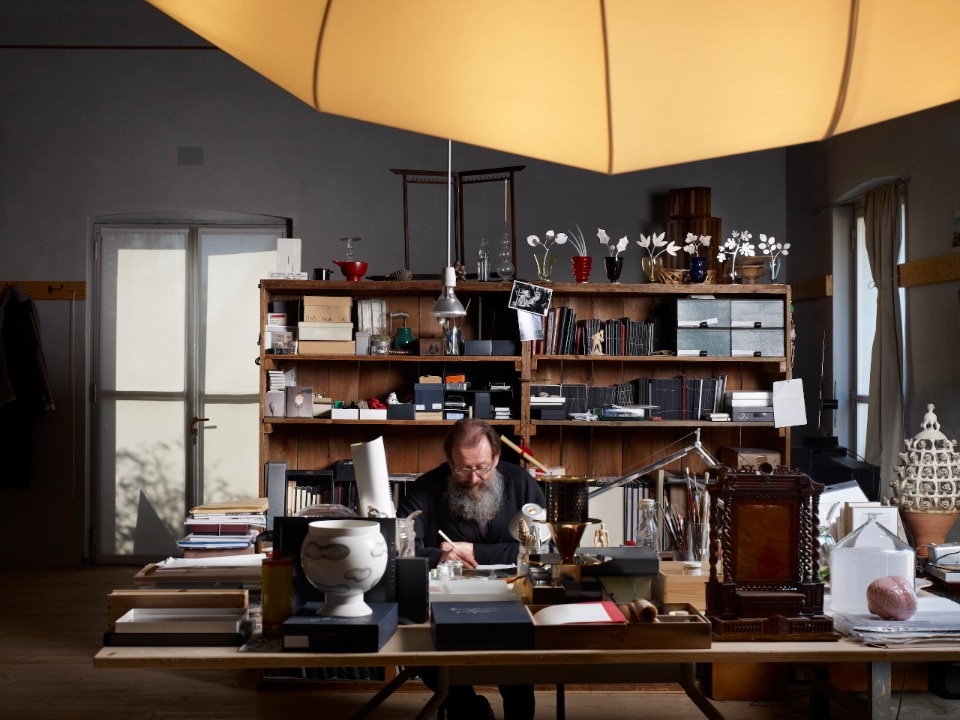At this critical time, my mind has been drawn not so much to projects but to thoughts and words – poems and nursery rhymes dear to my heart that are beacons of optimism. They show that art and the imagination have always offered people a lifeline, even during and after dark times such as wars and pandemics. Like the Lucio Battisti song Pensieri e parole, these “thoughts and words” convey that architecture is the discipline most able to “contain” all the artistic and craft disciplines; not just painting, sculpture and decoration in general which naturally spring to mind think but also the less tangible ones such as music, literature and poetry. Indeed, more than a few architects have used poetry and poetic creations to express themselves on the role of architecture and design, and as many writers have employed poetry to address architectural and design issues.
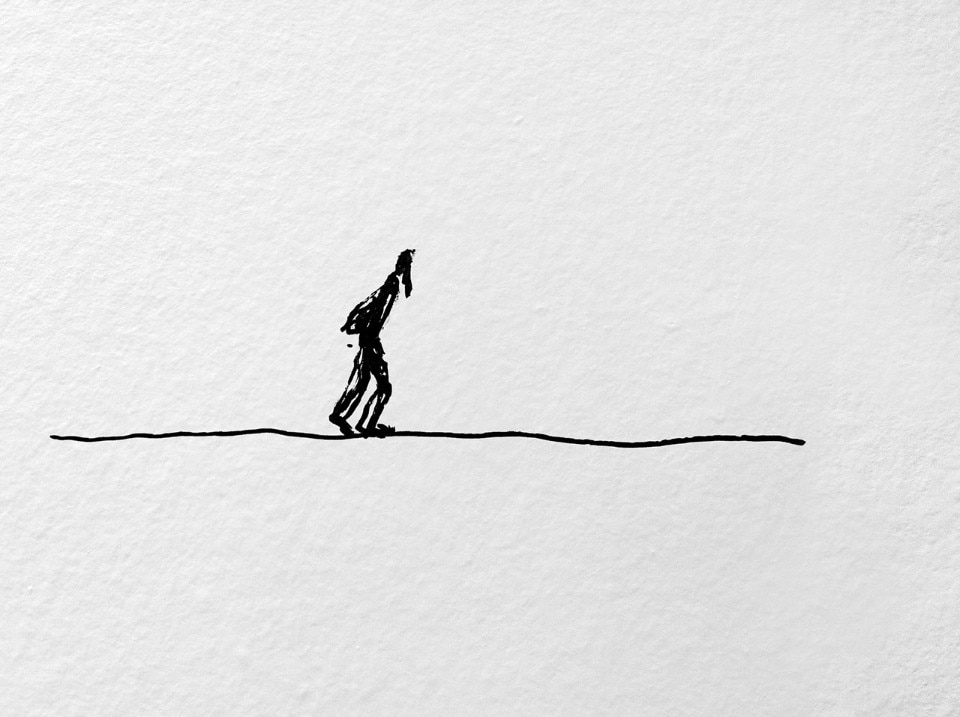
• • •
For every window, an architect must imagine a person looking out. For every door, a person passing through it.
Gio Ponti, Amate l’architettura, 1957
• • •
A TREE
is a slow explosion
of a Seed.
Bruno Munari, Versi, in Fenomeni bifronti, 1993
• • •
Bruno Munari and Gio Ponti both spread themselves across various disciplines. They looked to architecture as a means to communicate ideas on life and visions on existence, and the imagination was always the prime tool with which they saw the world. This, architecture lost its technological and technical pomposity and became a humanistic discipline, as it should and must be because in ancient times architecture was a humanistic and not solely a technical science.
If what Loris Malaguzzi said is true – that the environment is the third teacher – then it is even more important for architecture to be able to handle the abstract sensitivity of poetry, literature and evocative reflections.
• • •
As well as a poet and mathematician [an architect must be] a mechanic, book-keeper, lawyer, boor, master of good manners, biter of bullets and “charmeur”, elderly lady’s dance partner and snake charmer, on pain of death should he refuse.
Carlo Mollino, in Vita di Oberon, 1993
• • •
I know the smell of crafts:
grocers smell of nutmeg,
a workman’s overalls smell of grease,
a baker smells of flour,
farmers smell of the earth,
decorators smell of paint,
and a doctor’s white coat
has the fine smell of medicine.
Funnily enough, idlers
don’t smell but they do stink somewhat.
Gianni Rodari, L’odore dei mestieri, in Filastrocche in cielo e in terra, 1960
• • •
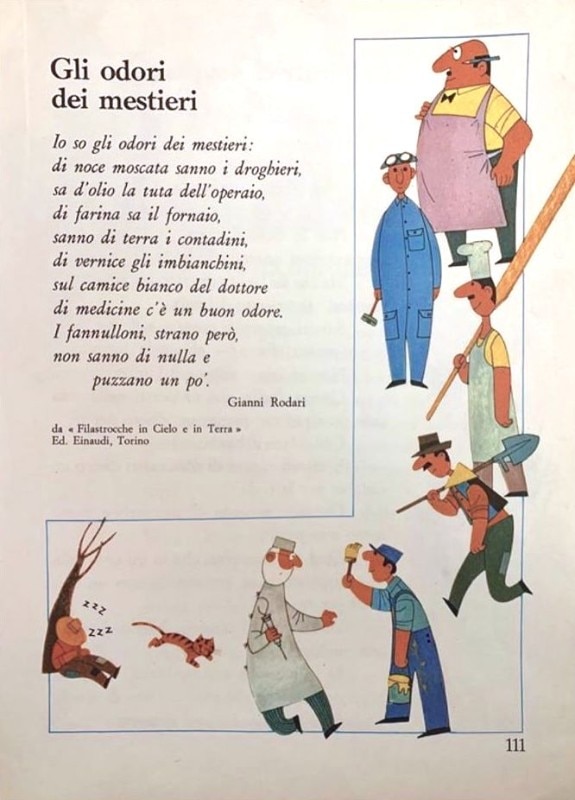
The words of the dynamic architect and creative genius that was Carlo Mollino go well with those of Gianni Rodari, a master of the art of inventing stories, and they contain a principle in which I firmly believe: that the architectural profession is the sum of all crafts. An architect must be able to step in and out of every profession, knowing, consuming and interpreting it.
• • •
The theater is very similar to architecture because both involve an event – its beginning, development, and conclusion. Without an event there is no theatre and no architecture […] it may be touching that everyone acts out his little part.
Aldo Rossi, in Autobiografia scientifica, 1990
• • •
Aldo Rossi’s words on the theatre provide more food for thought. Architecture always has to do with the theatre in the sense that we all play out our existence inside the architecture, environments and stage sets that we have created for ourselves; where we believe we are playing the part that best suits us, that we like the most and with which we most identify. We must always remember that a great human quality is that of being able to look at ourselves from the outside; not only does this encourage us ethically and morally to curb our roguish tendencies it is also a way of stimulating our imagination when we are the players on the stage in a theatre where we are reciting a part, the one we believe will most gratify and satisfy us.
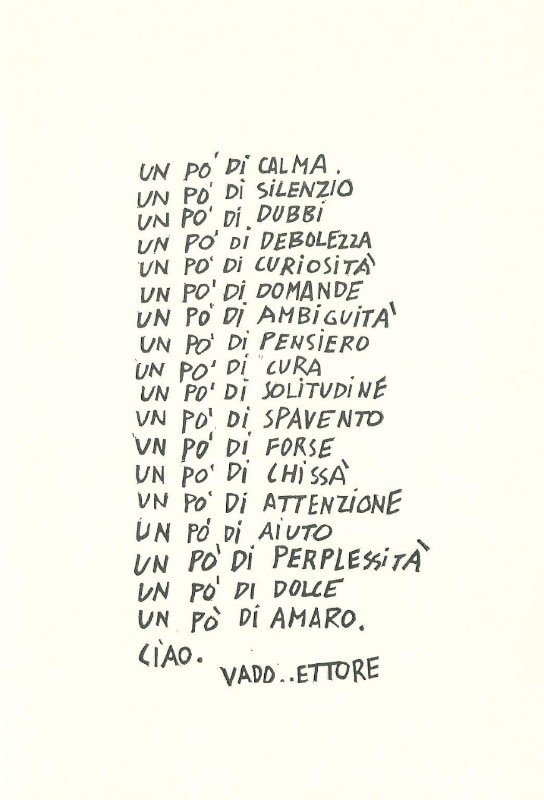
• • •
Some calm
some silence
some doubts
some weakness
some curiosity
some questions
some ambiguity
some thought
some care
some solitude
some fright
some maybes
some who knows
some focus
some help
some perplexity
some sweetness
some bitterness
Bye
I’m off… Ettore
Ettore Sottsass, in Un po’ di attenzione, 2003
• • •
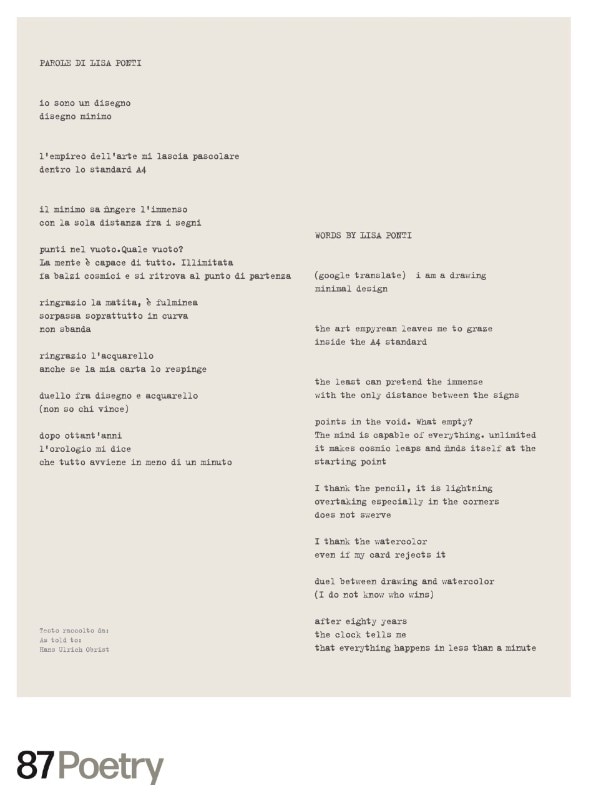
• • •
I am a drawing
minimal design
the art empyrean leaves me to graze
inside the A4 standard
the least can pretend the immense
with the only distance between the signs
points in the void. What empty?
The mind is capable of everything. unlimited
it makes cosmic leaps and finds itself at the
starting point
I thanks the pencil, it is lightning
overtaking especially in the corners
does not swerve
I thank the watercolor
even if my card rejects it
duel between drawing and watercolor
(I do not know who wins)
after eighty years
the clock tells me
that everything happens in less than a minute
Lisa Ponti, in Domus 1020, Rebellion, 2018
• • •
Ettore Sottsass and Lisa Ponti managed to put hugely evocative images and thoughts down on paper; they could create an architecture of words. Their imaginations enabled them to narrate a project or an idea by constructing simple but beautiful poetically charged sentences.
• • •
I’m not an architect, I’m a dragon
Alessandro Mendini
• • •
LOVE ALL CREATURES
INSECTS AND ANIMALS
WITH LEGS OR WITH WINGS
THE TOTAL GRAVITY
AND DEEP MYSTERY
OF THEIR THOUGHT
WALKING NAKED
LIKE CHRISTIAN PROPHETS
OR INDIAN BRAHMINS
WITH THEIR TEETH
THEY PROTECT THE LIVING
AND PERHAPS THEY ARE RISEN
FROM THE REALM OF THE DEAD
Andrea Branzi, in Nel Regno dei viventi, 2013
• • •
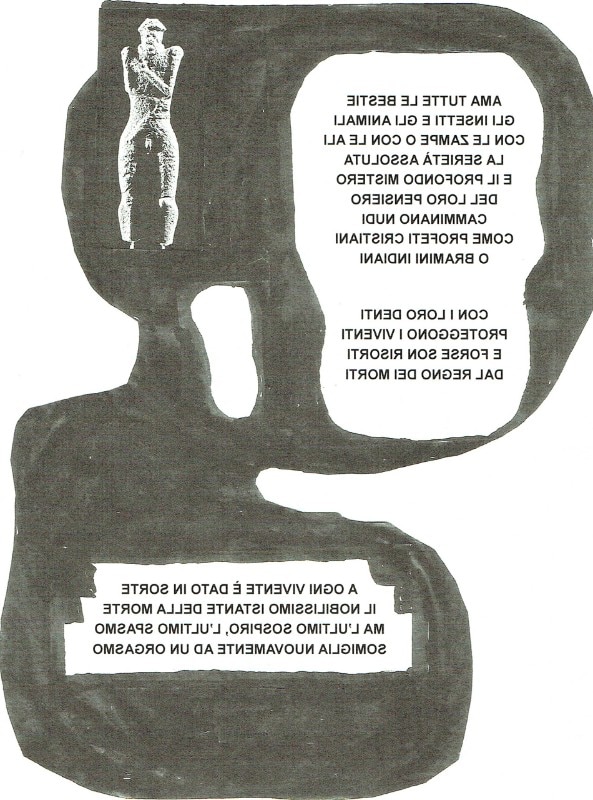
This Andrea Branzi nursery rhyme is one of those thought backwards, to be read in the mirror, and narrates the great topics of humans, the universe and animals, whereas Alessandro’s are a synthesis of his creative soul.
• • •
Zuccone
I said no
and I’ll not do it!
By nature
I am headstrong,
and I can’t change,
I said no.
I said yes,
and it’s what I want!
And I am capable,
if I so wish,
of spending all day
saying yes.
Lina Schwarz, Zuccone, in Ancora... e poi basta!, 1920
• • •
I really like this nursery rhyme and, although it may seem slightly out of place among all the others, it works because it speaks of the talent of architects. Not only must they imagine the architecture, interiors and designs, they must also be able to communicate them in the toing and froing between laxity and stubbornness, and insistence on wanting to do and insistence on not wanting to do.
Opening image: Michele De Lucchi in his studio, photo Max Rommel


